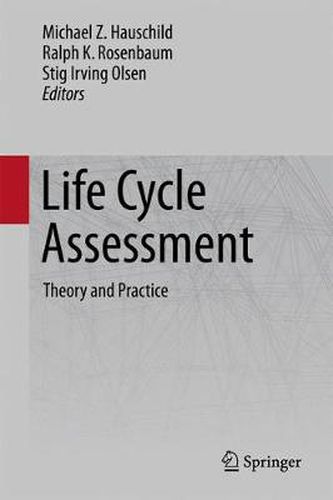Readings Newsletter
Become a Readings Member to make your shopping experience even easier.
Sign in or sign up for free!
You’re not far away from qualifying for FREE standard shipping within Australia
You’ve qualified for FREE standard shipping within Australia
The cart is loading…






This book is a uniquely pedagogical while still comprehensive state-of-the-art description of LCA-methodology and its broad range of applications. The five parts of the book conveniently provide: I) the history and context of Life Cycle Assessment (LCA) with its central role as quantitative and scientifically-based tool supporting society’s transitioning towards a sustainable economy; II) all there is to know about LCA methodology illustrated by a red-thread example which evolves as the reader advances; III) a wealth of information on a broad range of LCA applications with dedicated chapters on policy development, prospective LCA, life cycle management, waste, energy, construction and building, nanotechnology, agrifood, transport, and LCA-related concepts such as footprinting, ecolabelling,design for environment, and cradle to cradle. IV) A cookbook giving the reader recipes for all the concrete actions needed to perform an LCA. V) An appendix with an LCA report template, a full example LCA report serving as inspiration for students who write their first LCA report, and a more detailed overview of existing LCIA methods and their similarities and differences.
$9.00 standard shipping within Australia
FREE standard shipping within Australia for orders over $100.00
Express & International shipping calculated at checkout
This book is a uniquely pedagogical while still comprehensive state-of-the-art description of LCA-methodology and its broad range of applications. The five parts of the book conveniently provide: I) the history and context of Life Cycle Assessment (LCA) with its central role as quantitative and scientifically-based tool supporting society’s transitioning towards a sustainable economy; II) all there is to know about LCA methodology illustrated by a red-thread example which evolves as the reader advances; III) a wealth of information on a broad range of LCA applications with dedicated chapters on policy development, prospective LCA, life cycle management, waste, energy, construction and building, nanotechnology, agrifood, transport, and LCA-related concepts such as footprinting, ecolabelling,design for environment, and cradle to cradle. IV) A cookbook giving the reader recipes for all the concrete actions needed to perform an LCA. V) An appendix with an LCA report template, a full example LCA report serving as inspiration for students who write their first LCA report, and a more detailed overview of existing LCIA methods and their similarities and differences.